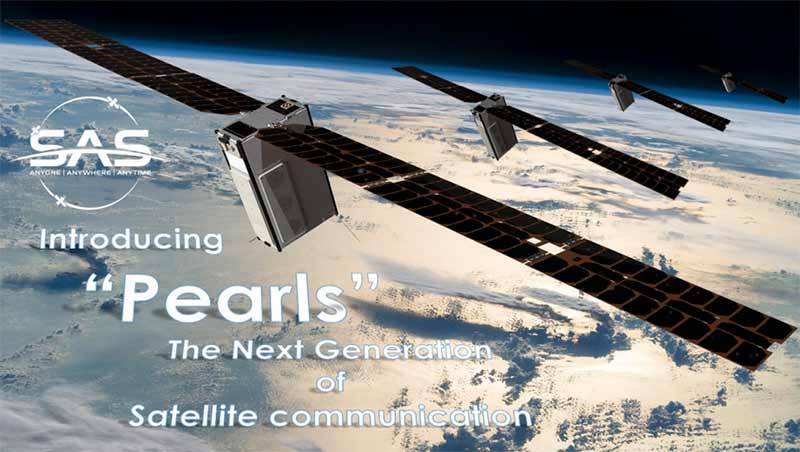Sky and Space hits major milestone as nano-satellites start making money
Tech
Tech
ASX-listed satellite maker Sky and Space Global has passed a major milestone, generating the first revenue from its “3 Diamonds” nano-satellites — while quickly progressing towards the launch of 200 next-generation “Pearl” devices.
For the past six months Sky and Space (ASX:SAS) has been operating three commercial demonstrator satellites — the 3 Diamonds.
From the second quarter this year the devices — which are the world’s smallest communication satellites — will be generating more than $1 million revenue per year.
Trials are also underway with prospective new customers. When fully operational they could generate $2 million to $3 million a year — and that’s only the first generation.
SAS is aiming its satellite-based communications service at the 3 billion people in equatorial regions who don’t have data coverage outside of major cities.
The nano satellites offer “narrowband” communications, allowing voice calls, messages and data for applications such as “internet of things” connectivity. They can offer significantly cheaper services than current narrowband providers.
“It’s a simple and economical communications services,” SAS director Brett Mitchell told Stockhead. “SAS is not competing with cellular services — they position themselves as complementary.
“It is cheap and affordable for regions that are some of the poorest in the world.”
SAS’s expertise in miniaturisation was pushing forward a new era in satellite technology, Mr Mitchell said.
“Mobile phones have changed and evolved but nothing has changed in satellites in 50 years,” Mr Mitchell said. “Capital expenditure is much cheaper on these nano satellites.”
On track for next-generation launch
SAS is now quickly progressing towards the launch of 200 next-generation “Pearl” satellites.
The technology is so efficient that SAS is planning to launch an astounding 20 to 25 satellites per quarter between 2019 and 2020 for a total of 200.
Due to be operational by 2020, the new satellites feature three-metre, sun-tracking solar panels and 150 watts of power, enabling 24/7 payload operation. SAS signed a binding deal with Italy’s D-Orbit in October to provide launch and deployment services for roll-out.
“We are continuing to build partnerships that can generate further revenues for the business and look forward to launching the full constellation from Q1 2019 and completed the whole Equatorial Constellation before then end of 2020,” the company said.
This would would significantly increase revenue generation opportunity.
Once 100 satellites are up and running, the opportunity would grow to $300 million to $500 million per year. At 200 operational satellites the revenue opportunity could be $600 million to $1 billion.

“The Pearls are our fully developed satellite, each twice the size of the Diamonds,” Mr Mitchell told Stockhead.
Sky and Space Global’s MD, Meir Moalem said: “After all the hard work in the past six months, we are excited to see that the 3 Diamonds are performing better than expected and are already starting to generate revenues, even though they were only meant to be technology demonstrators.
“This proves not only that our technology works, but also that our business model is profitable and that there is a significant demand for the narrowband connectivity services that we are offering.”
Well-funded after $10m capital raising
Sky and Space is well-funded following a heavily over-subscribed $10 million placement.
Proceeds from the capital raising wil be used to complete the design, construction and launch costs of the first batch of 20 Pearl nano-satellites and to provide working capital.
This special report is brought to you by Sky and Space Global.
This advice has been prepared without taking into account your objectives, financial situation or needs. You should, therefore, consider the appropriateness of the advice, in light of your own objectives, financial situation or needs, before acting on the advice.
If this advice relates to the acquisition, or possible acquisition, of a particular financial product, the recipient should obtain a Product Disclosure Statement (PDS) relating to the product and consider the PDS before making any decision about whether to acquire the product.